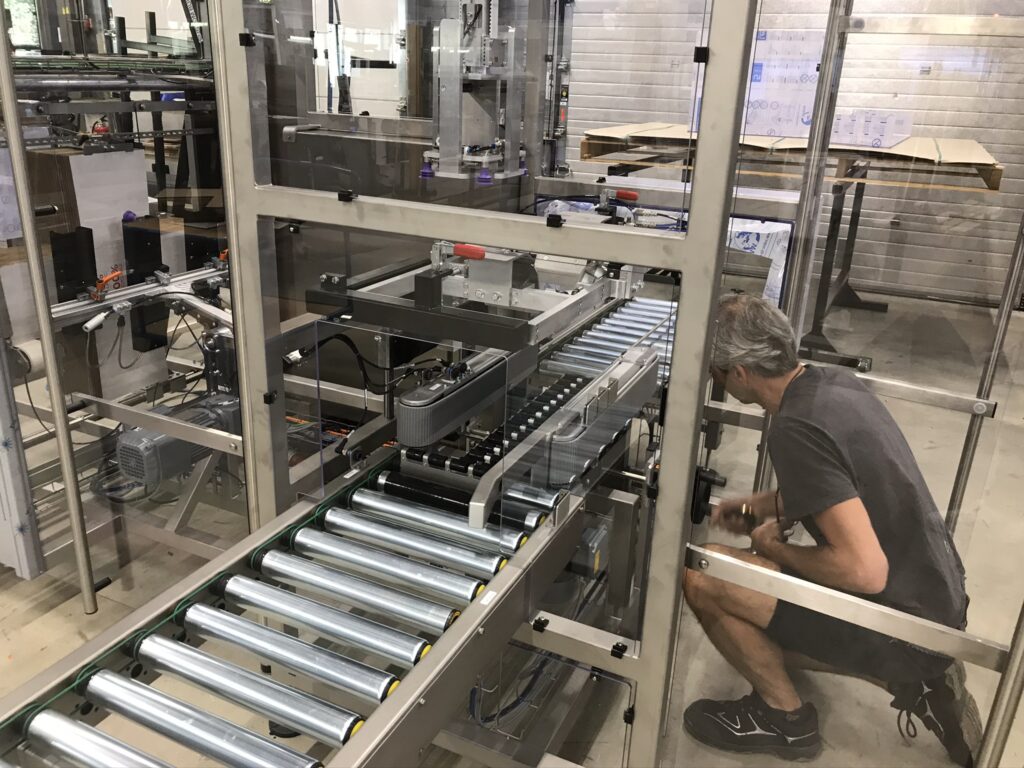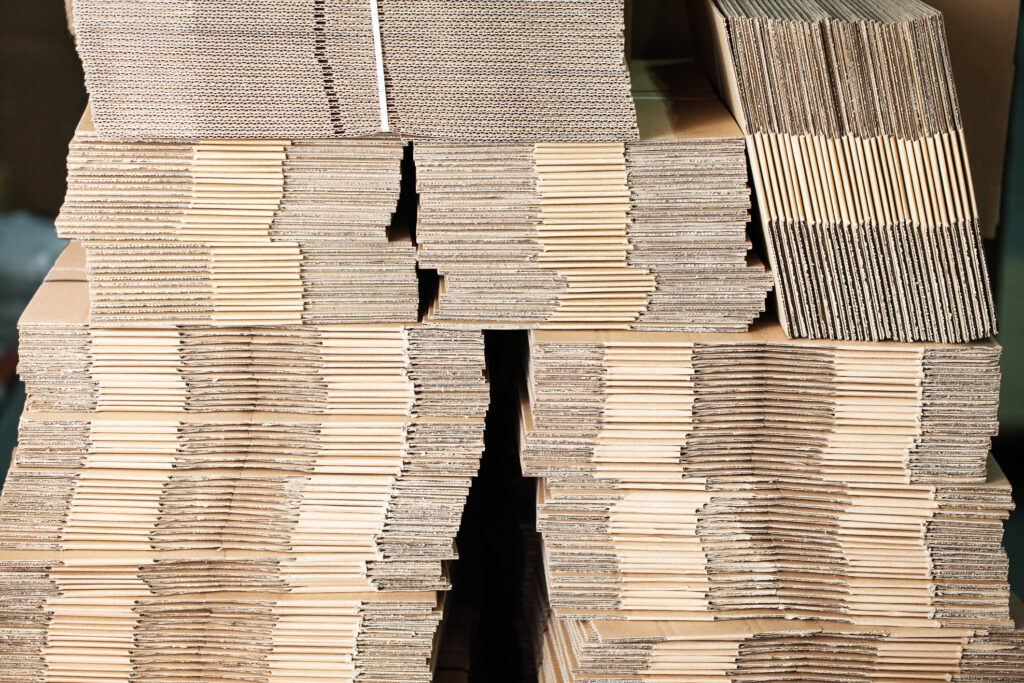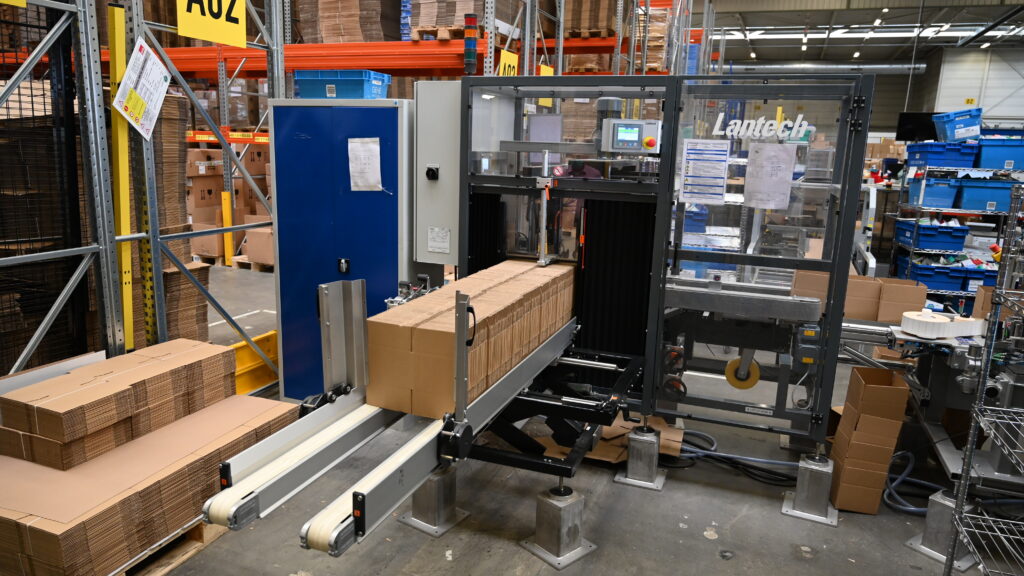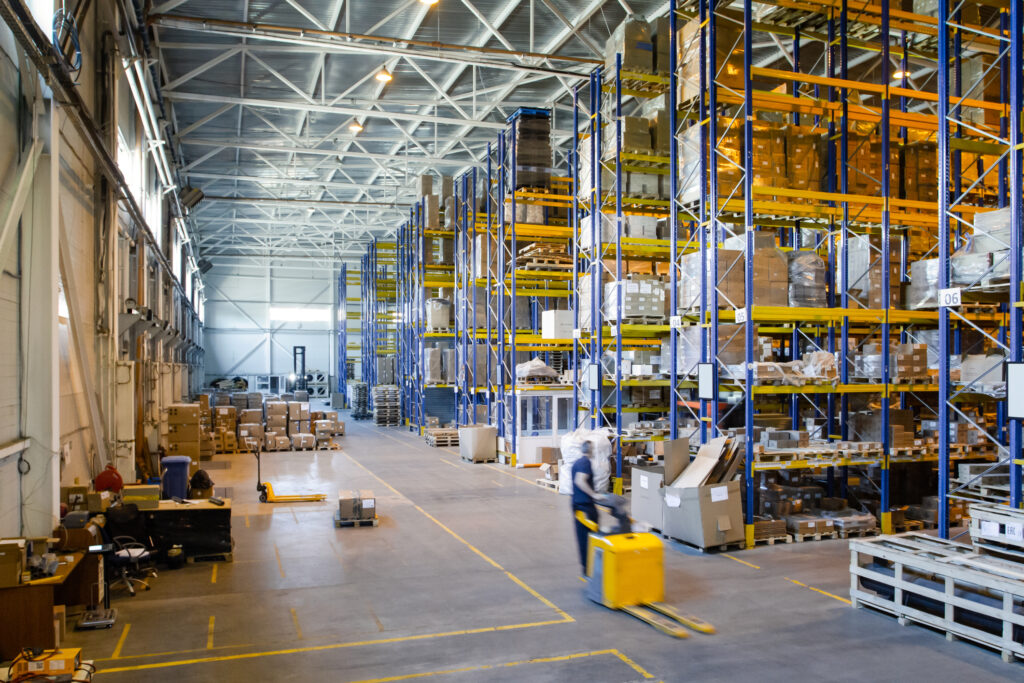We estimate 20,000,000 pallet loads slide off each year resulting in $6 billion worth or unsalable products. Pallet wrapping uneven products (like those that are packaged in pails, barrels, or rolls) can be a challenge to keep on the pallet. Similarly, severely offset loads are also challenging to pallet wrap. When shipping these types of loads, however, sometimes distributors demand that they are not just pallet wrapped, but wrapped to the pallet.
This happened to a large manufacturer of asphalt sealer who regularly shipped to a big box store.
The store demanded that their product (5-gallon pails of asphalt sealer) be wrapped to the pallet. Because the big box store was their largest customer, the manufacturer needed to find a way to satisfy this demand and they needed to do it quickly.
“When our largest customer said they would start rejecting our asphalt sealer if loads were not wrapped to the pallet, it got our attention,” said the Production Supervisor of a large manufacturer of asphalt sealer.
Pails, barrels, and rolls are easy to wrap but the key is wrapping them in such a way that they do not come off the pallet during shipping. They’re usually heavy and wrapped with high levels of wrap force. Sudden stops, starts, or vibrations can cause heavy loads to slide off their pallets during shipping.
The fact that companies are putting products with circular perimeters on rectangular pallets means that the products will be either inboard or outboard at the pallet corners. In our experience, the products are overwhelmingly inboard, thus exposing the four sharp pallet corners.
Anchoring Pallet Loads
Breaking the problem down, there were two main issues that needed to be addressed.
- Avoiding film punctures
- Strengthen the pallet to load bond
Issue 1 can be addressed in a couple of ways. One of the most common ways to avoid film punctures is simply to not wrap to the bottom of the pallet, which leaves room for the forks. Pre-streched film hitting a sharp corner, at high wrap force and at 12 rpm or more, isn’t a good combination. Film tends to break under those conditions. Operators find film breaks annoying so they sometimes don’t wrap these loads to the pallet.
If a company had a semi automatic wrapper or an automatic stretch wrapper without a roping device we would recommend backing off on the wrap force and adding more layers of film particularly at the bottom of the load (and checking to see that containment force is sufficient). This solution fell flat with this company because it wasn’t a good fit for issue 1 and it increased film costs.
Outboard loads are another problem. Once the load overhangs the pallet by more than two inches or so, a good load-to-pallet bond is hard to achieve so the load is subject sliding off the pallet during shipment. A conventional (accordion style) rope or a rolled rope can be very helpful under these conditions.
Issue number 2 likewise had a few options when it came to solutions. First, they could wrap to the bottom of the pallet but add more film layers. This was not ideal in this situation, which brought them back, again, to using either a conventional (accordion style) rope or a rolled rope.
New technology solving old problems
For this manufacturer the solution to their pallet load problem was equipping their stretch wrapper with Pallet Grip®. Pallet-Grip® creates a high-strength cable of film on the bottom edge of the web, and then tensions it around the top edge of the pallet load. You can see our solution in action on our website.
Some stretch wrappers bunch up the stretch film into an flexible rope. This is often hard to position on the pallet, and, during the vibrations and external forces of shipment, film ropes tends to come apart. As the rope separates, the strength decreases. We believe the best way to secure a load to a pallet is to create a film cable. When the stretch wrapping cycle is completes, the last 3 to 5 inches of film web are then rolled into a tight cable. This cable is then pushed about an inch below the deck boards of the pallet.
Film cables are strong enough to lock the pallet load, but also high enough to clear the forks of a forklift or pallet jack as they pick up the load.
A good rule of thumb is that every load that ships on a pallet should be bonded to it without punctures or tears in the stretch film The best way to avoid punctures and tears is by using a film cable that will make it less likely a forklift or pallet jack will compromise the load.
Editor’s Note: This post has been updated for accuracy.
You may be interested in these related posts:
- 3 Obvious Things About Stacking Pallet Loads People Often Overlook
- 3 Reasons Why You Should Weigh Your Pallet Before it Ships
- 3 Things Your Next Pallet Wrapper Should Do That You Might Not Know To Ask For
This post was published on December 29, 2016 and updated on November 28, 2018.
December 29, 2016






